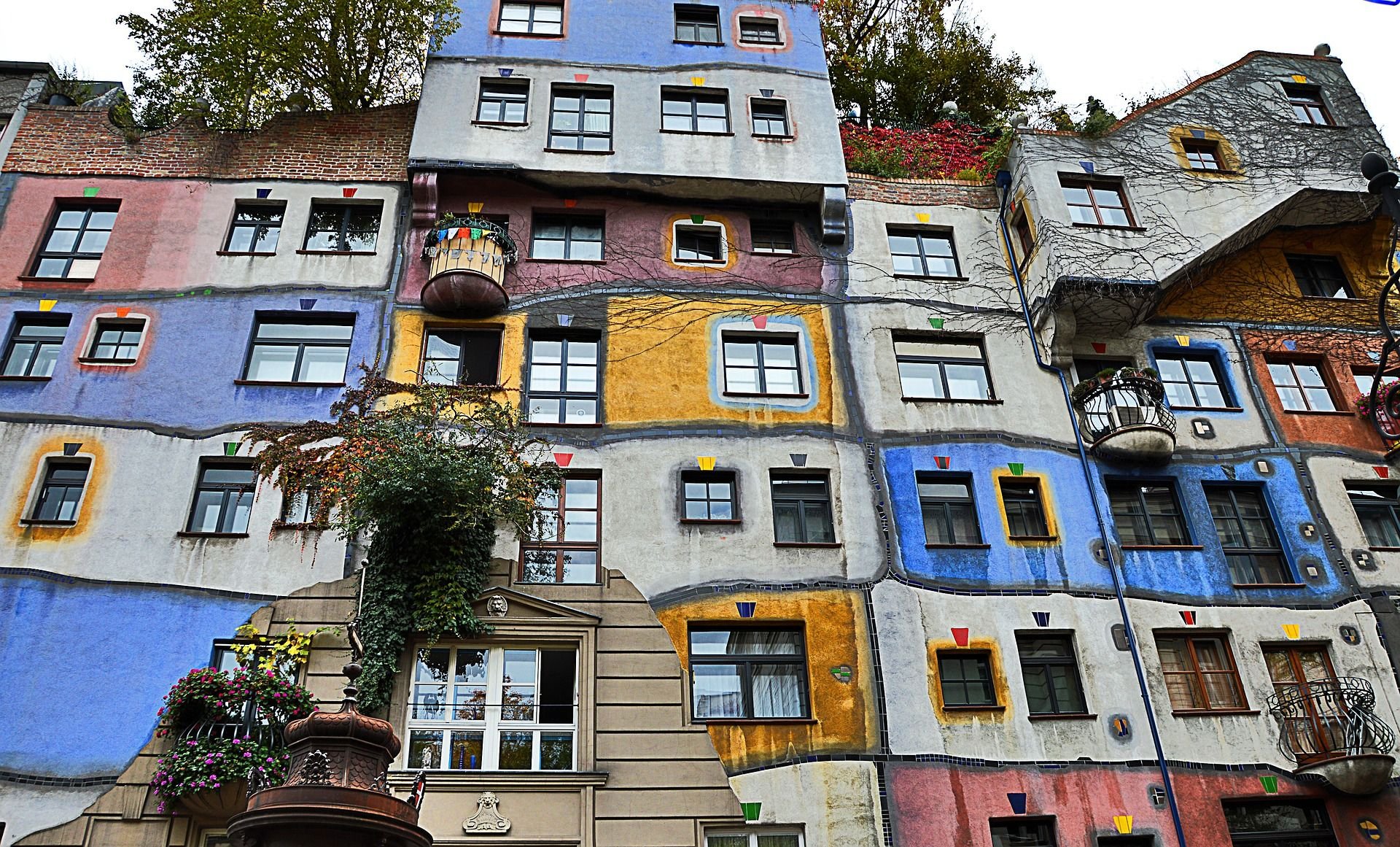Table Of Content

More than 30 trees up to 15 meters high provide a home for many birds and other animals. The bazaar inside is still there and more than 1.2 million visitors a year admire Hundertwasser’s ideas for interior design. Within the Hundertwasser Haus, you'll find a range of unique shops and cosy cafes lining the corridors.
Before Visiting the Hundertwasserhaus
Tours inside Friedensreich Hundertwasser’s Northland home to begin - New Zealand Herald
Tours inside Friedensreich Hundertwasser’s Northland home to begin.
Posted: Sun, 17 Dec 2023 08:00:00 GMT [source]
In the following paragraphs, we'll explore this architectural marvel, offering your peek into the whimsical world of Hundertwasser's masterpiece. From the colourful exteriors to the enigmatic interiors and from practical tips for visitors to ticket information, this guide covers it all. So, delve into the heart of Vienna and immerse yourself in a one-of-a-kind architectural experience. Over the years, the buildings of the Hundertwasser House have attracted more and more visitors, becoming a real attraction. Thus, a real center (The Hundertwasser village) was built next to the individual houses.Thanks to the presence of trees and shrubs on terraced balconies, the Hundertwasserhaus is a kind of green oasis in the heart of the city. The Hundertwasserhaus is a unique and colorful building that is definitely worth a visit when you’re in Vienna.
Architecture

As a result, you can’t go inside (real people live there), but you can wander around the outside or access the terrace café.
Hundertwasserhaus
The Hundertwasserhaus in Vienna is a building designed by the artist Friedensreich Hundertwasser and located in the 3rd Viennese district. It was architecturally realized with the collaboration of architect Josef Krawina as co-creator and the implementing architect Peter Pelikan. The design reflects Hundertwasser’s philosophy of harmonious coexistence between humans and nature, and his belief that straight lines are “godless” and should be avoided in architecture. All windows are of different size, not arranged in one building line, not on one level, but on different, harmonious spaces. The storeys should be of different height, the lower ones higher, the upper ones lower.
The artist also worked on several buildings and public spaces in other parts of Europe, as well as in Japan and New Zealand. But if you want to learn about the architect’s extraordinary life and vision, don’t skip Kunst Haus Wien – Museum Hundertwasser just a few steps away. "The straight lines and uniformity of Bauhaus architecture are coming to an end because they are unfeeling, sterile, cold, heartless, aggressive, and unemotional. The windows are of different sizes and are arranged randomly while creating a unique harmonious ensemble.
Whether you’re an art lover or just appreciate interesting architecture, you’ll enjoy walking around the exterior of the building and taking in all the quirky details. And if you have time, be sure to also visit the Kunsthaus Wien to see more of Hundertwasser’s work. With this guide, you’ll be well-prepared for a memorable visit to the Hundertwasserhaus in Vienna. Step inside the Hundertwasserhaus and you'll find it's every bit as spellbinding as its famed exterior. Visitors have the exciting opportunity to explore its unusual interior through the welcoming 'Live the Hundertwasser Dream' tour, where you can immerse in the unique lifestyle of this quirky building.
Other Hundertwasser Attractions in Vienna and Abroad
The museum exhibits the world’s largest collection of Hundertwasser’s works, including paintings, graphics and illustrations, tapestries and sketches for architectural works. A visit to the museum will give you a better understanding of the philosophical, ethical and creative principles that drove the work of this exceptional artist. Friedensreich Hundertwasser was a celebrated Austrian artist, architect, and environmentalist, known for his whimsical and colorful style. In addition to the Hundertwasserhaus, there are several other places in Vienna and Austria where you can see his art and architecture. The Hundertwasser Village or as it is called “Village at the Hundertwasserhaus” was built on the outside and inside according to the concept and ideas of the artist Friedensreich Hundertwasser in the years 1990 – 1991.
Are these the world’s ugliest houses? loveproperty.com - lovePROPERTY
Are these the world’s ugliest houses? loveproperty.com.
Posted: Mon, 18 Dec 2023 08:00:00 GMT [source]
You can purchase the combo ticket on the spot or, in order to avoid the lines at the ticket office, get the ticket online. The ticket gives you access to a permanent exhibition and a temporary special exhibition. So, the combo ticket seems to be the best option as you can see more additional exhibitions at the KunstHausWien for just 1 euro. Temporary exhibitions often focus on sustainability, climate change, recycling and urbanism, as the museum positions itself as a green museum. The Hundertwasser Museum contains the most complete collection of works of this unusual Austrian artist and architect.
Trees grow right in the apartments, and the roof of the house is covered with grass and bushes. Overall, there are plenty of sightseeing spots near Hundertwasserhaus worth visiting before and after your visit. Whether you’re interested in art, architecture, history, or just enjoying the city’s beautiful scenery, Vienna has something for everyone. In conclusion, Friedensreich Hundertwasser was a prolific artist and architect whose work can be seen in many places throughout Vienna and Austria. Whether you’re interested in his paintings, architectural designs, or environmental activism, there’s something for everyone to enjoy. So, if you’re a fan of Hundertwasser’s unique style, be sure to explore some of these other sites and attractions during your trip to Vienna and Austria.
He went on to pursue various other building projects, including an iconic Viennese incinerator. The Hundertwasserhaus can be admired at any time of day.Bars, shops and cafes have their own operating hours. Initially met with controversy due to its unconventional design, nowadays the Hundertwasser House is one of the most visited landmarks of Vienna. It displays many of his works, a photo collection, and an art exhibition, as well as temporary art installations. One building that stands out among the modern architectural treasures of the Austrian capital is the Hundertwasser House. Hundertwasserhaus is one of Vienna's main attractions and has become part of Austria's cultural heritage.
One of the most unique and unmissable places in Vienna is undoubtedly Hundertwasserhaus, or the Hundertwasser House. It is located in the eastern part of the capital, in the Landstraße district. By presenting artists who take up Hundertwasser’s ideas on ecology and sustainability and who reflect upon these from today’s perspective, Kunst Haus Wien as the first “ecological museum” is a platform for globally discussed and most topical issues. From its extraordinary exterior to its sustainable interior, the structure reflects Hundertwasser’s unique vision for a harmonious relationship between humans and nature. The magnificent building holds a special place in the world of architecture and design. The Hundertwasser House is located at the corner of Kegelgasse and Löwengasse in the 3rd district of the city.
To this end, architect Josef Krawina was invited to join the artist and to help him to put his ideas into practice. Richard Joseph Neutra (/ˈnɔɪtrə/ NOI-tra;[1] April 8, 1892 – April 16, 1970) was an Austrian-American architect. Living and building for most of his career in Southern California, he came to be considered a prominent and important modernist architect.[2][3] His most notable works include the Kaufmann Desert House, in Palm Springs, California. In 2001, the house became a subject of a bitter legal battle after Joseph Krawina claimed he has done as much work on it as Hundertwasser. Medienvertriebsgesellschaft mbH under its business manager Harald Böhm encouraged him to legally substantiate his claim as co-creator of the building.
Some balconies of different styles and shapes are placed ornamentally and organically. Architect Pelikan became Hundertwasser’s long-term partner, working with him on numerous other building projects. The bright colours and uneven shapes of the its façade have proven to be popular with tourists, and the Hundertwasserhaus has become one of the most visited buildings in Vienna.
You can dive into the aromatic ambiance of the cafes, browse through the array of prints and keepsakes at the gift shop, or pick unique souvenirs to bring back home. Visiting these shops and cafes not only gives you an immersive shopping experience but a glimpse of Hundertwasser's artistic world in a practical setting. We recommend venturing into these spots as they capture the essence of this magnificent building in their own delightful way.
Hundertwasser Village could be described as a medieval village with the flair and colours of contemporary art; a wooded forest grows on the roof of the village, a distinctive feature of Hunderwasser dictated by his love of nature. The Hundertwasserhaus is located in the third district of Vienna, about 4km southeast of the city center. Take the U3 metro line to the station “Landstraße”, and then transfer to the tram line 1 or 0 to “Hetzgasse”. The house was designed by Sumner Spaulding in 1933 in the style of a French chateau.













